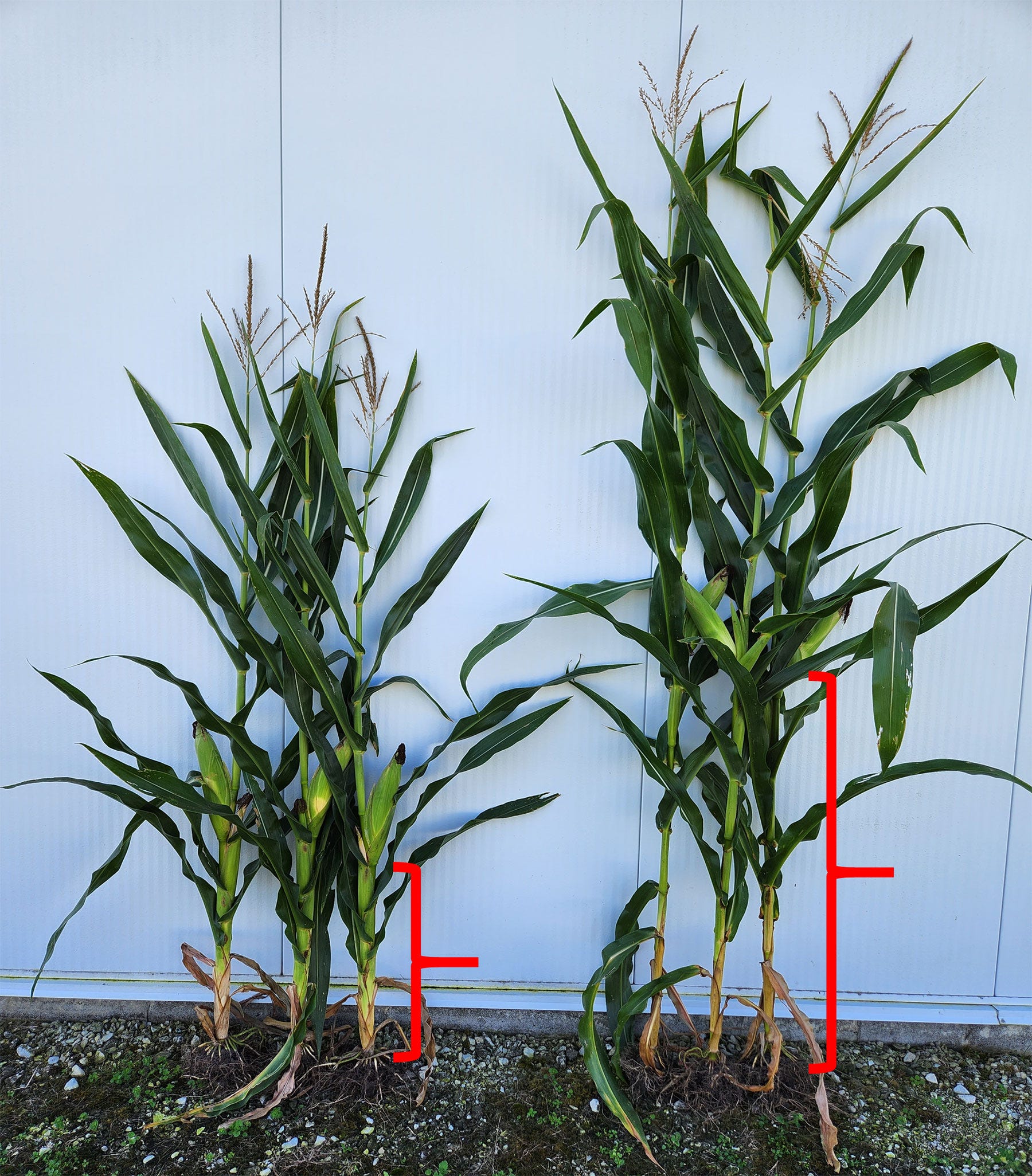January 2, 2024

Multiple major seed and genetic companies in the U.S. are introducing new “short-stature” corn hybrids. These hybrids are noticeably shorter than current full-stature hybrids. They often range 20 to 24 inches shorter in height. Overall, these hybrids have potential benefits that include increased lodging resistance, increased tolerance to higher plant populations and narrower rows, plus easier in-season access with spray equipment for fertilizer and pesticide applications.
However, the introduction of these new hybrids raises many new questions for producers and consultants. How do these hybrids compare to current full-stature hybrids? How well do these hybrids yield?
Therefore, new research at Purdue University in partnership with Bayer CropScience, one of the leaders in the introduction of these new hybrids, sought to answer some of these questions.
In 2023, research trials at Purdue comparing both short-stature and full-stature hybrids observed noticeable differences in average plant height, at 67 inches vs. 86 inches. Average ear height was also noticeably different, at 22 inches above the ground vs. 37 inches, measured from the point where the ear shank attaches to the main stem.

HEIGHT IMPACT: More than just overall plant height changes in short-stature corn, Purdue Extension’s Dan Quinn says. Ear height is also closer to the ground.
However, minimal differences in average aboveground total plant biomass were noted. Total biomass was 7,300 pounds per acre for short corn vs. 7,200 pounds per acre for conventional corn. The reduced heights of short-stature hybrids are typically realized in the “stacked” internode-spacing below the ear.
Short-stature hybrids maintained similar leaf number and exhibited a wider stem diameter and a wider ear leaf diameter than full-stature hybrids. That likely contributed to the lack of total biomass differences.
Yield results
Overall, the short-stature hybrids maintained very strong yields at both Purdue research locations in Indiana. They produced the same or slightly lower yields in comparison to full-stature hybrids when grown in the exact same environments.
For example, short-stature hybrid yields exceeded 300 bushels per acre within multiple research treatments, and maintained average yields ranging from 240 to 260 bushels per acre in northwest Indiana and 250 to 300 bushels per acre in central Indiana.
These hybrids also exhibited a higher tolerance to both increased seeding rates and 20-inch, narrow-row systems. For example, research in both central and northwest Indiana observed continued yield increases as seeding rates increased from 34,000 to 50,000 seeds per acre when grown in 20-inch rows.
This suggests these hybrids may have the potential to tolerate even higher plant populations when grown in narrow-row systems. Furthermore, agronomic optimum seeding rates for short-stature corn in 30-inch rows were often on average 6,000 to 8,000 seeds per acre more than for current full-stature hybrids.
Erick Olivia, a master’s graduate assistant student, contributed to this article.
About the Author(s)
You May Also Like




